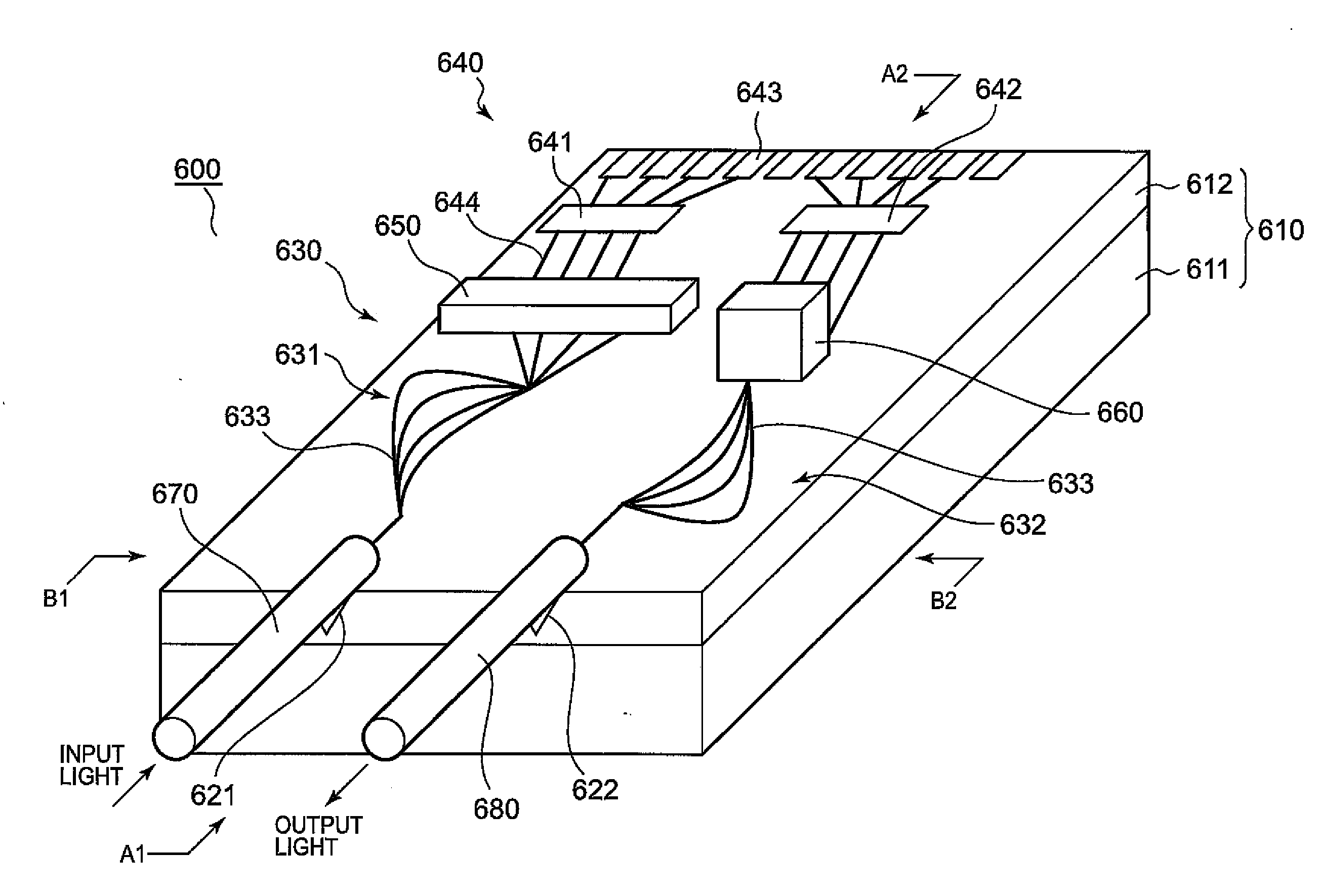Optical Integrated Circuit, Opto-Electronic Integrated Circuit and Manufacturing Method Thereof
- Summary
- Abstract
- Description
- Claims
- Application Information
AI Technical Summary
Benefits of technology
Problems solved by technology
Method used
Image
Examples
first preferred embodiment
[0037]A preferred embodiment of an optical integrated circuit according to the present invention will be explained using FIGS. 1 through 5.
[0038]FIG. 1 is a sectional view conceptually showing an optical waveguide structure of the optical integrated circuit according to the present embodiment.
[0039]As shown in FIG. 1, an optical waveguide 100 according to the present embodiment includes a lower clad 110 and cores 120.
[0040]The lower clad 110 is configured by a sapphire substrate. Here, a refractive index of sapphire is 1.75 in the case of light having a light wavelength of 1550 nm. The thickness of the sapphire substrate ranges from 330 μm to 460 μm, for example.
[0041]Each of the cores 120 is comprised of a silicon film formed directly on the lower clad 110. Here, a refractive index of silicon is 3.48 in the case of a light wavelength of 1550 nm. A sectional shape of each core is rectangular and its dimensions, e.g., the thickness thereof is about 0.22 μm and the width thereof is ab...
second preferred embodiment
[0060]A second preferred embodiment of an opto-electronic integrated circuit according to the present invention will be explained using FIGS. 6 through 13.
[0061]FIG. 6 is a conceptual view showing an overall configuration of the opto-electronic integrated circuit according to the present embodiment.
[0062]As shown in FIG. 6, the opto-electronic integrated circuit 600 according to the present embodiment includes an SOS substrate 610, an optical integrated circuit 630, an electronic integrated circuit 640, a photodiode array 650 and a laser diode array 660. The opto-electronic integrated circuit 600 is connected to an input optical fiber 670 and an output optical fiber 680.
[0063]The SOS substrate 610 has a sapphire substrate 611 and a silicon film 612. The sapphire substrate 611 is used as a substrate for forming the electronic integrated circuit 640 and also used as a lower clad of each optical waveguide that constitutes the optical integrated circuit 630 in a manner similar to the fi...
PUM
 Login to View More
Login to View More Abstract
Description
Claims
Application Information
 Login to View More
Login to View More - R&D
- Intellectual Property
- Life Sciences
- Materials
- Tech Scout
- Unparalleled Data Quality
- Higher Quality Content
- 60% Fewer Hallucinations
Browse by: Latest US Patents, China's latest patents, Technical Efficacy Thesaurus, Application Domain, Technology Topic, Popular Technical Reports.
© 2025 PatSnap. All rights reserved.Legal|Privacy policy|Modern Slavery Act Transparency Statement|Sitemap|About US| Contact US: help@patsnap.com



